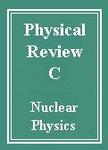版权所有:内蒙古大学图书馆 技术提供:维普资讯• 智图
内蒙古自治区呼和浩特市赛罕区大学西街235号 邮编: 010021

作者机构:Department of Statistics and Probability Michigan State University East Lansing Michigan 48824 USA FRIB Laboratory Michigan State University East Lansing Michigan 48824 USA Department of Physics and Astronomy and NSCL Laboratory Michigan State University East Lansing Michigan 48824 USA Department of Physics and Astronomy and FRIB Laboratory Michigan State University East Lansing Michigan 48824 USA
出 版 物:《Physical Review C》 (物理学评论C辑:核物理学)
年 卷 期:2018年第98卷第3期
页 面:034318-034318页
核心收录:
学科分类:07[理学] 070202[理学-粒子物理与原子核物理] 0702[理学-物理学]
基 金:U.S. Department of Energy, USDOE, (DOE-DE-NA0002574) Office of Science, SC National Nuclear Security Administration, NNSA, (DE-SC0013365, DE-SC0018083)
主 题:Learning Nuclear many-body theory Nuclear structure & decays Nuclear binding Metropolis algorithm Monte Carlo methods Nuclear density functional theory
摘 要:Background: The mass, or binding energy, is the basis property of the atomic nucleus. It determines its stability and reaction and decay rates. Quantifying the nuclear binding is important for understanding the origin of elements in the universe. The astrophysical processes responsible for the nucleosynthesis in stars often take place far from the valley of stability, where experimental masses are not known. In such cases, missing nuclear information must be provided by theoretical predictions using extreme extrapolations. To take full advantage of the information contained in mass model residuals, i.e., deviations between experimental and calculated masses, one can utilize Bayesian machine-learning techniques to improve predictions.